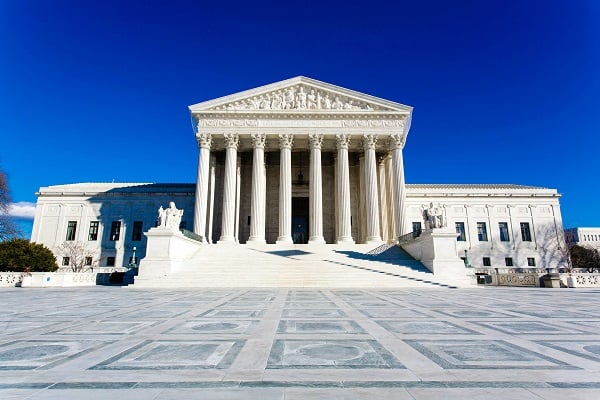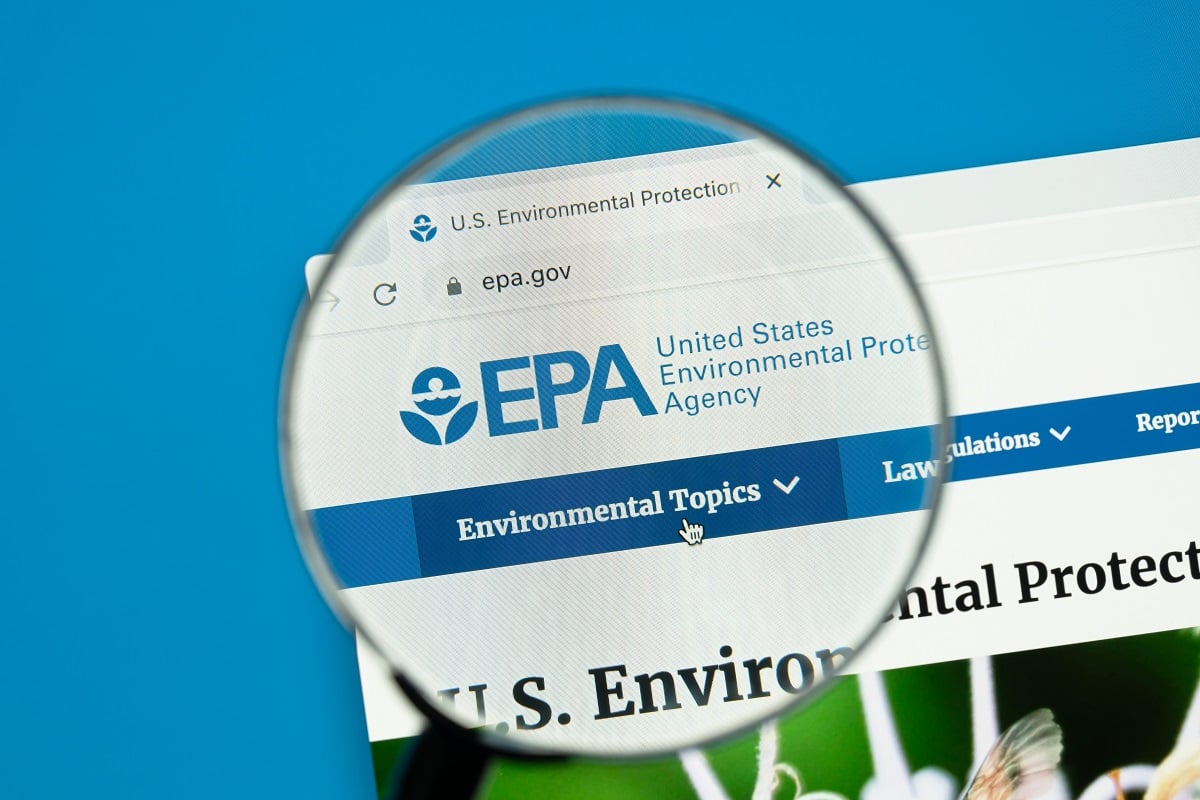Environmental Law Implications of Loper Bright and the End of Chevron Deference
On Friday, June 28, 2024, the U.S. Supreme Court overruled Chevron v. NRDC in Loper Bright Enterprises v. Raimondo.[1] Although the Court’s decision to overturn Chevron was anticipated, Loper Bright nonetheless represents a paradigm shift because the Chevron doctrine had been a cornerstone of administrative law for 40 years.

U.S. Supreme Court Stays EPA Ozone Interstate Transport Rule
On Thursday, in Ohio v. Environmental Protection Agency, the U.S. Supreme Court stayed an Environmental Protection Agency (EPA) rule that would have required the implementation of additional, significant emissions controls in power plants, pipelines, cement factories, glass factories, iron and steel mills, paper mills, and other industrial facilities across 23 states. The stay provides relief to those industries as they challenge various aspects of the rule in the U.S. Court of Appeals for the D.C. Circuit — challenges on which the Supreme Court found the states and industries were likely to succeed.
U.S. EPA Proposes Revisions to Project Emissions Accounting Under New Source Review
The U.S. Environmental Protection Agency (EPA) is proposing revisions to the New Source Review (NSR) permitting program that would make it more difficult to net out of NSR requirements by changing how to calculate the net emissions resulting from a facility modification. EPA also proposes to define the term “project” more narrowly to prevent sources from aggregating changes to net out of major NSR requirements. The proposal would revise reforms adopted only four years earlier during the Trump administration that had provided additional flexibility to sources making changes to their operations.

EPA Chemical Safety Rule Raises Questions About Authority
For what appears to be the first time in its history, the U.S. Environmental Protection Agency has recently finalized a rule that requires board-level involvement in an EPA-administered program. Specifically, the EPA’s recent amendments to the Risk Management Program (RMP) require certain chemical plants and refineries to submit third-party audit reports on process safety directly to the audit committee of the company’s board of directors. In short, the EPA is seeking to get involved in corporate governance by dictating what information management must provide to the audit committee and when — regardless of management input. In this article, first published in Law360 on April 25, 2024, Sidley lawyers Justin Savage, Ike Adams, and Aaron Flyer dissect the recent RMP amendments, which are a follow up to the EPA’s Safer Communities by Chemical Accident Prevention rule, finalized March 11, 2024. The authors explore the EPA’s authority to regulate corporate governance requirements, the practical value in doing so, and the potential fallout for companies in terms of corporate governance. If the new RMP rule survives judicial review, it may embolden the EPA to issue other board reporting obligations in any number of its regulatory programs governing corporate operations.
U.S. EPA Announces New “Strategic Civil-Criminal Enforcement Policy”
On April 17, 2024, the U.S. Environmental Protection Agency (EPA) published its “Strategic Civil-Criminal Enforcement Policy,” a landmark new internal enforcement policy for its civil and criminal enforcement offices (the Policy) that signals a paradigm shift in how the agency will assess, coordinate, and prosecute civil (including administrative) and criminal environmental enforcement. In the Policy, EPA states that it has already started increasing communication and collaboration between its enforcement offices in recent years, which EPA believes has led to better case screening and more consistent enforcement responses across regions. But the Policy goes far beyond those less formal efforts and reflects EPA’s stated goal to continue toward an integrated approach, moving away from its prior, more bifurcated approach to civil and criminal enforcement.
U.S. EPA Announces New National Primary Drinking Water Regulations for PFAS
On April 10, 2024, the U.S. Environmental Protection Agency (EPA) announced the first-ever legally enforceable drinking water standards for per- and polyfluoroalkyl substances (PFAS). PFAS are a group of thousands of manmade chemicals that have been manufactured and used globally since the 1940s. They are commonly found in textiles, cookware, packaging, plastics, and firefighting foams. PFAS are typically very persistent in the environment and in the human body, meaning that they do not break down and can accumulate over long periods of time. For that reason, they are often called “forever chemicals.” This action is the most recent step in the EPA’s October 2021 “PFAS Strategic Roadmap,” a report establishing action items to address PFAS contamination and timelines for their completion.
The Newest Phase of EPA’s Greenhouse Gas Emissions Standards: Phase 3
On March 29, 2024, the U.S. Environmental Protection Agency (EPA) announced its most recent national greenhouse gas (GHG) pollution standards for heavy-duty (HD) vehicles, including HD vocational vehicles and tractors. The rule establishes new CO2 emission standards for model year (MY) 2032 and later HD vehicles, with more stringent CO2 standards phasing in as early as MY 2027 for certain vehicle categories.
Fifth Circuit Limits EPA’s Attempts to Regulate PFAS Under Toxic Substances Control Act in Inhance Technologies v. EPA
On March 21, 2024, the U.S. Court of Appeals for the Fifth Circuit vacated two U.S. Environmental Protection Agency (EPA) orders under Section 5 of the Toxic Substances Control Act (TSCA), holding that EPA had exceeded its statutory authority when it issued the orders in an attempt to regulate the manufacture of per- and polyfluorinated substances (PFAS) by petitioner Inhance Technologies, LLC (Inhance). The Fifth Circuit’s decision comes after EPA’s Office of Enforcement and Compliance Assurance announced its National Enforcement and Compliance Initiatives for Fiscal Years 2024 – 2027, which involve increased emphasis on addressing PFAS exposure and contamination through enforcement actions and potential additional regulations.
U.S. Environmental Protection Agency Releases Draft Risk Evaluation Under the Toxic Substances Control Act for Formaldehyde
On March 15, 2024, the U.S. Environmental Protection Agency (EPA or the Agency) published its draft risk evaluation under the Toxic Substances Control Act (TSCA) for formaldehyde. This proposal is one of a series of risk evaluations EPA is conducting as required by the 2016 amendments to TSCA.
U.S. EPA Sets Stricter National Ambient Air Quality Standards for Particulate Matter
On February 7, 2024, the U.S. Environmental Protection Agency (EPA) issued a final rule under the Clean Air Act lowering the primary (health-based) annual National Ambient Air Quality Standard (NAAQS) for fine particulate matter 2.5 micrometers in diameter or smaller (PM2.5) from 12 to 9 micrograms per cubic meter (µg/m3). EPA asserts that the stricter standard is based on scientific evidence showing that the current PM2.5 standard (12 µg/m3), which was established in 2012 and retained in 2020, does not sufficiently protect human health. According to EPA, based on air monitoring data from 2020-22, 119 counties would not meet the new standard of 9 µg/m3.

